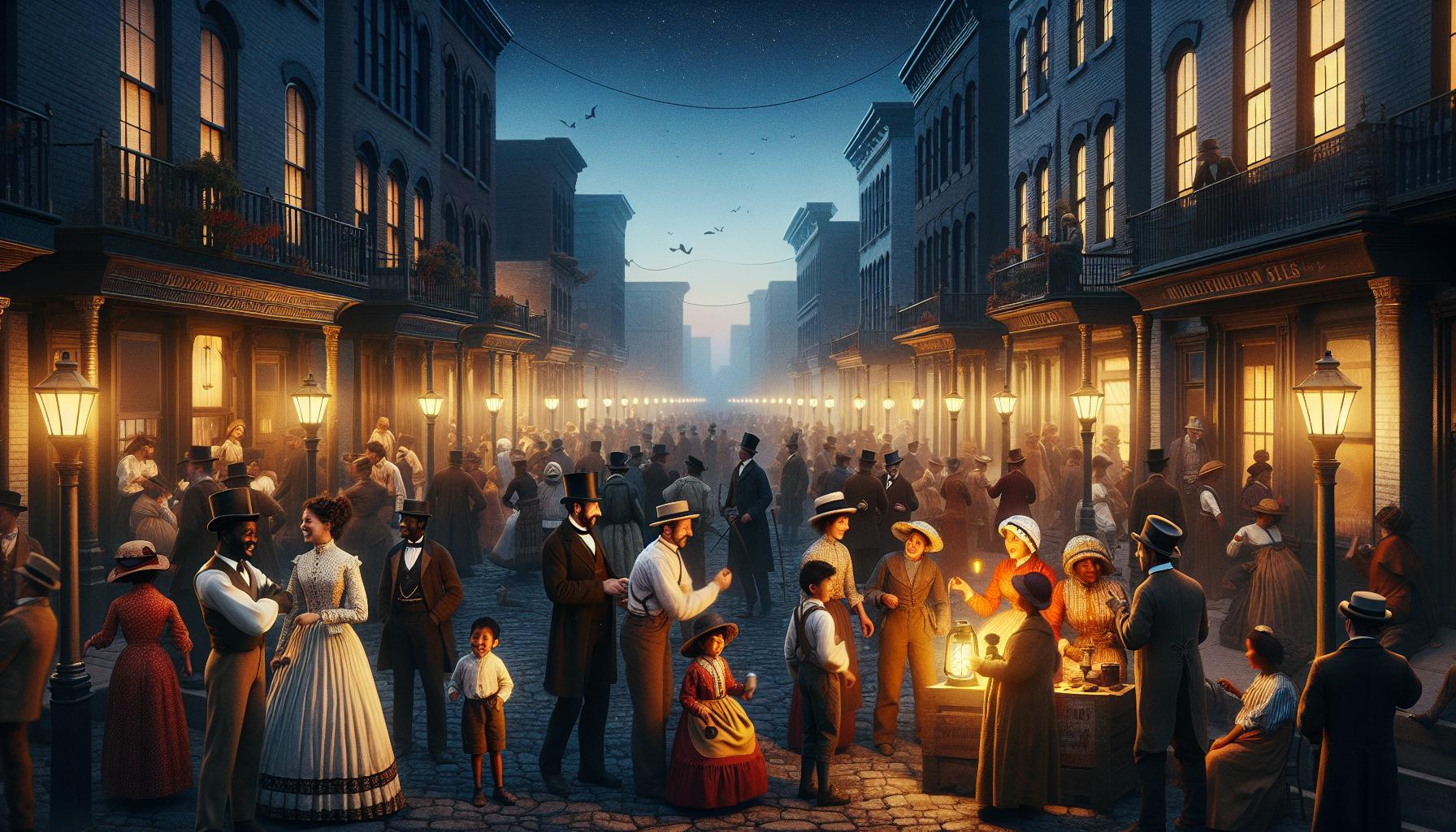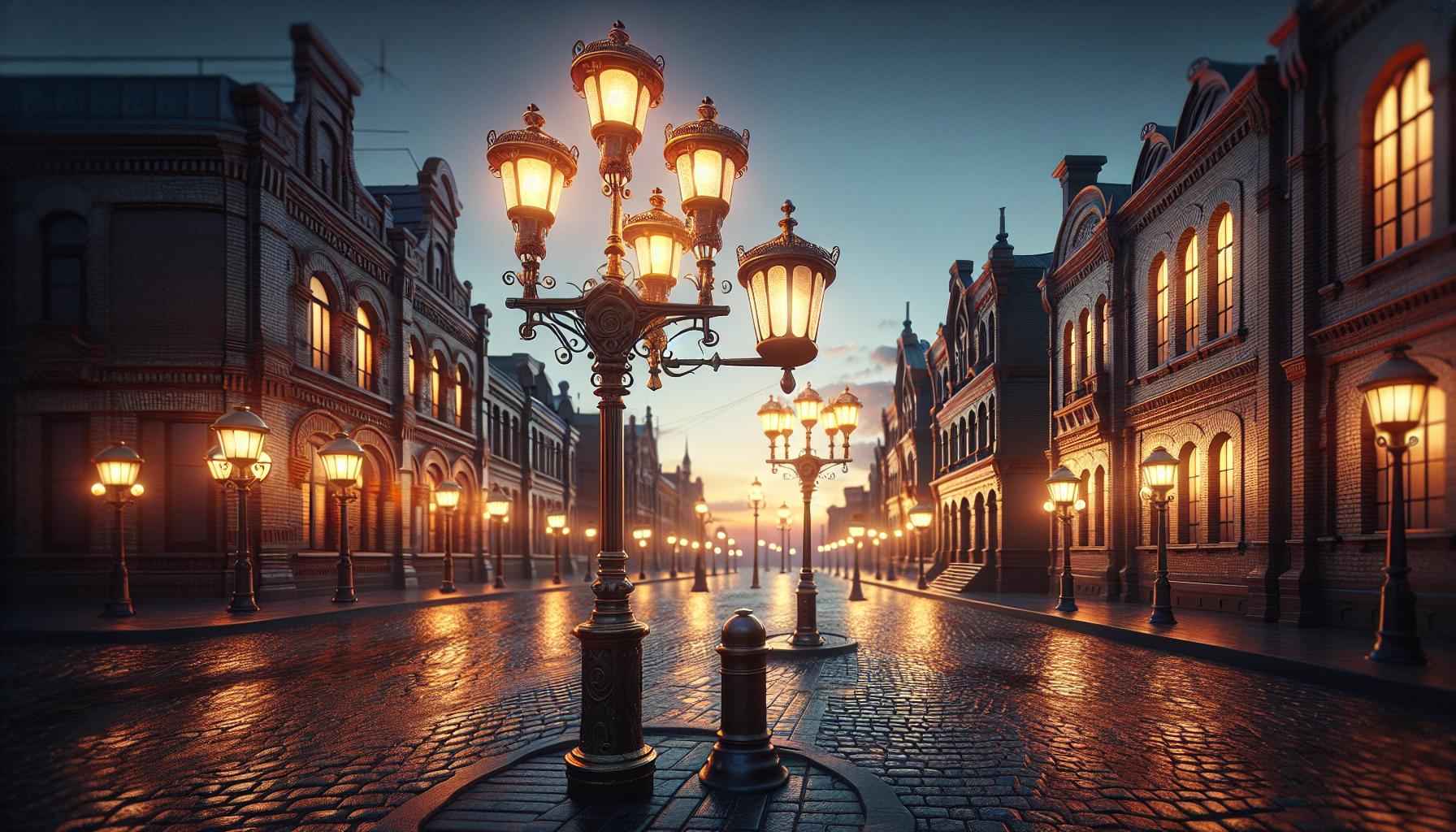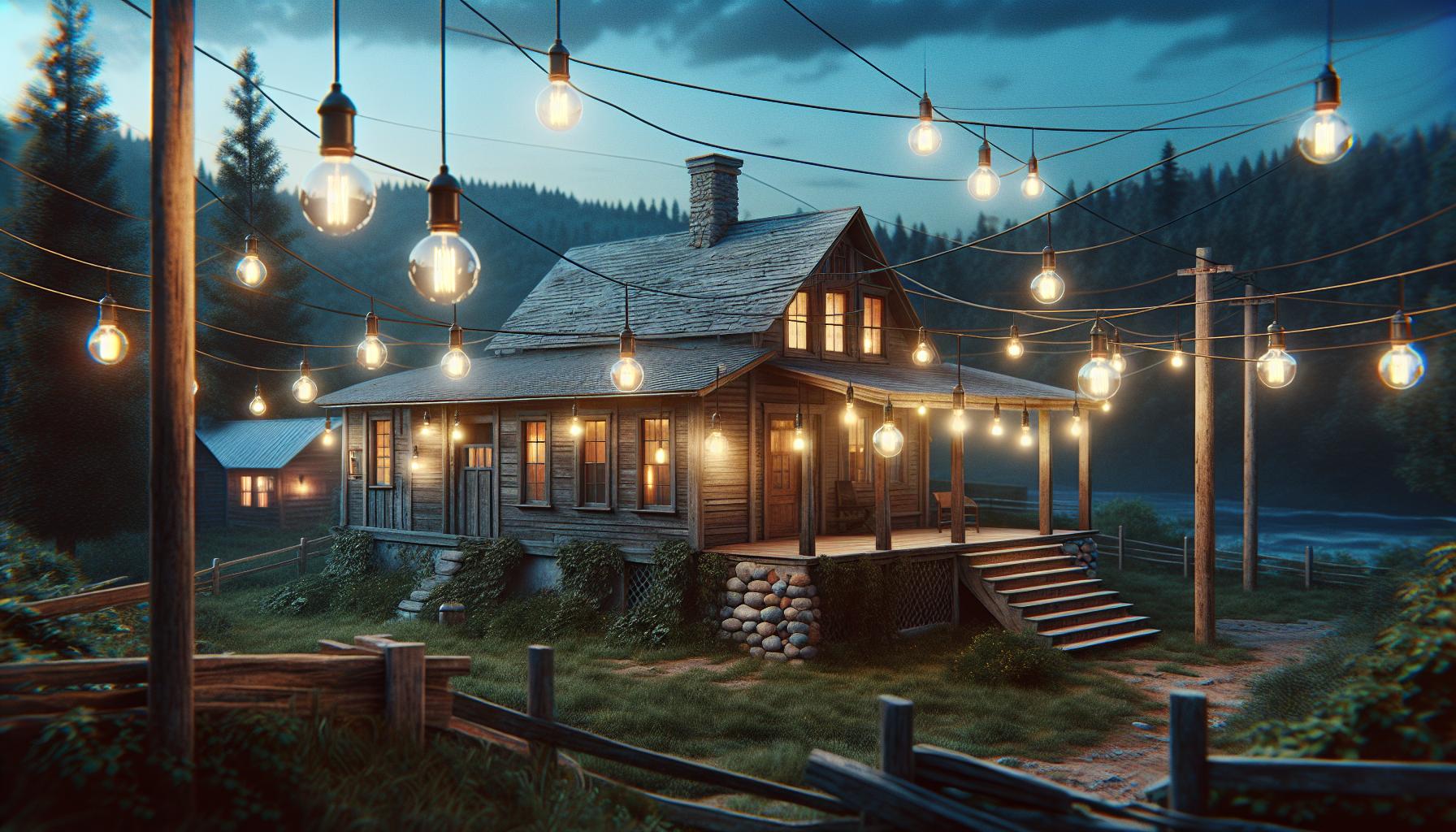Imagine life without the flip of a switch to instantly brighten your room. Hard to picture, right? Yet, there was a time when light bulbs were a novel invention rather than a household staple. It’s a journey that transformed how you live, work, and play.
The light bulb’s tale is one of ingenuity and it didn’t illuminate homes overnight. In the late 19th century, the incandescent bulb began to flicker into the public sphere. But when did it really start to shine in the everyday lives of people like you?
It took decades for the light bulb to become a common fixture. By the early 20th century, urban areas saw the glow first, but it wasn’t until the mid-20th century that rural homes were fully electrified. Let’s flip back through the pages of history and see how this bright idea became an essential part of your daily life.
The Invention of the Light Bulb
You might’ve heard the story of Thomas Edison and the light bulb. Heck, your DIY projects have probably involved some Edison bulbs for that vintage vibe! But the truth is, Edison wasn’t the only bright spark in the invention of the light bulb – he was one of many. Back in the 1800s, inventors around the globe were feverishly working on the idea of electric light.
Before Edison, there was Humphry Davy’s electric arc lamp in 1802, sans a practical power source. Then in the 1840s and 1850s, there were advancements by Warren de la Rue and William Staite. These pioneers set the groundwork, but their bulbs were too costly for everyday use.
Fast forward to the late 1870s and early 1880s – this is when things heated up. Edison’s carbon filament bulb came into the spotlight. But let’s not forget about Joseph Swan, who independently developed a similar bulb in England. Swan and Edison eventually joined forces, paving the way for the bulbs you’ve come to know and tinker with.
- Humphry Davy – 1802: Electric arc lamp
- Warren de la Rue – 1840s: Platinum filament bulb
- William Staite – 1850s: Improved longevity
- Thomas Edison – 1879: Carbon filament bulb, commercial success
- Joseph Swan – 1880: Similar design, collaborative work with Edison
The moment these bulbs lit up, it was clear this invention was going to change the world. But it wasn’t just about the bulb. It was also about making electricity more accessible and the whole system more affordable. There were patents, legal battles, and loads of experimentation – a drama-filled saga of trials and errors.
Edison’s successful demonstration in Menlo Park could be seen as the starting gun for wide-scale public adoption. Yet, the bulb had to wait for the electrical grid to catch up. As a DIY enthusiast, you know that every great project needs a strong foundation. It was no different with the light bulb – it needed a network of power stations and wiring before it could become common in homes.
The Late 19th Century: Flickering into the Public Sphere
Imagine stepping into the late 1800s, a pivotal era where the public began embracing the wonder that is electric light. Electricity, once a luxury, was inching its way to becoming a household necessity. The advent of practical light bulbs opened up a world of possibilities for after-dark activities and was reflective of the broader electric revolution taking place.
During this period, Edison’s incandescent bulbs started popping up in various public spaces. Streetlamps, which were once dimly lit by gas, began glowing with the steady reassurance of electric light. This transition was slow but steady, and before you knew it, electric bulbs began to adorn theatres, factories, and department stores, making these spaces safer and more inviting.
Electrification was key to the widespread use of light bulbs, sparking a drive to build more power stations across the United States. By the 1890s, cities had grids expansive enough to start offering electricity to residential areas. Here are some key milestones that marked the era:
- 1882: Edison opened the Pearl Street Station, New York City’s first commercial power plant.
- 1892: The creation of General Electric, a company that would drive the electrical movement forward.
The average homeowner took a little longer to be convinced, though. For many, gas and candlelight sufficed, and the initial cost of wiring a house for electricity was intimidating. However, as costs began to drop and installation methods improved, the introduction of electricity tariffs made it more feasible for the typical family to consider this modern convenience.
Think about it—DIY enthusiasts and homeowners began to see lighting as an achievable upgrade. They realized that bright, reliable light could extend their active hours and improve their quality of life. With lighting companies marketing directly to these potential customers, showcasing the functionality and elegance of electric lighting, the bulb gained even more popularity. Social gatherings no longer needed to end at sundown, and the concept of nightlife was redefined.
« Do Light Bulbs Have Gas in Them? Uncover the Illuminating Truth
Are Light Bulbs Supposed to be Hot? Uncover the Surprising Truth »
As electricity became more accessible, the light bulb started to become a symbol of progress and innovation, a beacon that would, quite literally, light the way into the 20th century. It wouldn’t be long before the hum of electricity and the glow of a light bulb through the window would become hallmarks of a nightfall transformed.
The Early 20th Century: Cities See the Glow
As you delve into the era of the early 1900s, it’s fascinating to see how cities began to shimmer with the glow of electric lights. Street lamps no longer relied on gas but were rapidly being replaced by electric bulbs, which proved safer and more reliable. This period marked a significant shift as metropolitan areas transformed; night became less daunting and more a time of bustling activity. Public spaces sparkled, beckoning people to enjoy cities’ newly electrified splendor well after sunset.
The evolution of electricity and lighting within homes took on a different pace. By this time, the idea of installing electric lights wasn’t just for the affluent or the technophile; it permeated into the middle-class psyche. Advertisements of the period depicted well-lit homes as bastions of warmth and comfort, a direct appeal to your ancestors’ desire for modernity and convenience. The first two decades of the 20th century saw a boom in the number of homes wired for electric lights.
Consider the role of the light bulb manufacturers who, understanding the potential of their market, began offering a variety of bulb options. It wasn’t just about creating light; it was about tailoring that light to your lifestyle and décor. You had bulbs that cast a softer glow for a cozy reading nook and brighter, sturdier ones for workshops and kitchens.
Naturally, as a DIY aficionado, you’d appreciate the surge in creativity and personalization this afforded. The ability to influence the mood and functionality of a space with different lighting options was a game-changer, encouraging even the most hesitant homeowner to consider the switch.
The proliferation of electric light in public and private realms catalyzed the growth of the power industry, which focused on expanding capacity and infrastructure. This growth meant more and more neighborhoods could be electrified, reducing the distance electrical lines had to cover and, accordingly, the overall cost of electrical installation in homes.
Remember, at this juncture, the light bulb had evolved beyond a mere novelty or luxury. It was becoming an indispensable part of urban life, weaving itself into the fabric of society as a symbol of innovation and convenience. Whether illuminating massive factories or the humblest of living rooms, the light bulb stood as a beacon of progress in the early 20th century.
The Mid-20th Century: Rural Electrification
During the mid-20th century, you’d have noticed a significant shift in light bulb use, expanding beyond urban settings. The Rural Electrification Act of 1936 was a pivotal moment that transformed the countryside. Before this act, fewer than 10% of rural homes had electricity. This statistic underwent a drastic change following the act’s implementation, providing federal loans for the installation of electrical distribution systems.
The impact of rural electrification on the commonality of light bulbs was profound. By the 1950s, the percentage of rural homes with electric power soared to 90%. With electricity reaching the farmsteads and remote areas, the light bulb began to weave itself into the fabric of rural life.
- Improved quality of life: Imagine life without electric lights – that was the norm for many rural areas before electrification. With the arrival of electric bulbs, tasks weren’t bound by daylight, and homes became safer and more productive after dark.
- Economic growth: Electric lights extended work hours, powered machinery, and led to increased economic activities in rural communities. Farmers could milk cows early in the morning with electric lights, and their children did homework at night, leading to better education outcomes.
It’s interesting to note how technological advancements influenced light bulb design during this period. The bulbs were no longer just functional; they became decorative. You’d find an array of shapes, sizes, and colors, designed to fit the aesthetic preferences of the modern homeowner. Durability also improved, with some bulbs boasting longer lifespans, reducing the frequency of replacement.
With electric lines reaching the most distant corners of the country, the Holiday Season experienced a new sparkle. Homes and towns, no matter how remote, began to light up, creating a stunning visual testament to the universal adoption of the light bulb. This era set the stage for outdoor lighting to become a community event, with Christmas lights becoming a widespread tradition.
The spread of electricity and the humble light bulb played a key role in the modernization and unification of rural and urban America in the mid-20th century.
Conclusion
You’ve seen how the humble light bulb revolutionized the way you live, work, and celebrate. It’s fascinating to think that what started as a novel invention became a staple in every household, connecting rural and urban America in ways previously unimaginable. Today, you can’t imagine life without the convenience and comfort they bring. Remember, every time you flip that switch, you’re part of a history that brightly illuminates your world, day in and day out.
Frequently Asked Questions
Who is credited with the evolution of the light bulb in the early 20th century?
While Thomas Edison is often credited with the invention of the light bulb, the early 20th century saw many inventors and companies contribute to its evolution with improvements in filament materials and bulb efficiency.
How did the adoption of electric lighting in homes affect the power industry?
The widespread adoption of electric lighting led to significant growth in the power industry, with increased demand for electricity leading to more power plants and the expansion of the electrical grid.
What was the impact of the Rural Electrification Act of 1936?
The Rural Electrification Act of 1936 dramatically increased the percentage of rural homes with electric power, from around 10% before the Act to 90% by the 1950s, drastically improving quality of life and economic activity in rural areas.
In what ways did electric bulbs improve life in rural areas?
Electric bulbs extended work hours, improved educational opportunities by allowing for evening study, and enhanced comfort and safety after dark, leading to better quality of life in rural communities.
How did technological advancements influence light bulb design?
Technological advancements led to more energy-efficient bulbs and diverse designs, shifting light bulbs from merely functional objects to also becoming decorative elements in households.
What role did electricity play in the creation of Christmas light traditions?
The spread of electricity to remote areas allowed for the use of electric Christmas lights, which became a widespread tradition, adding sparkle to the Holiday Season and marking a new era of festive decoration.




